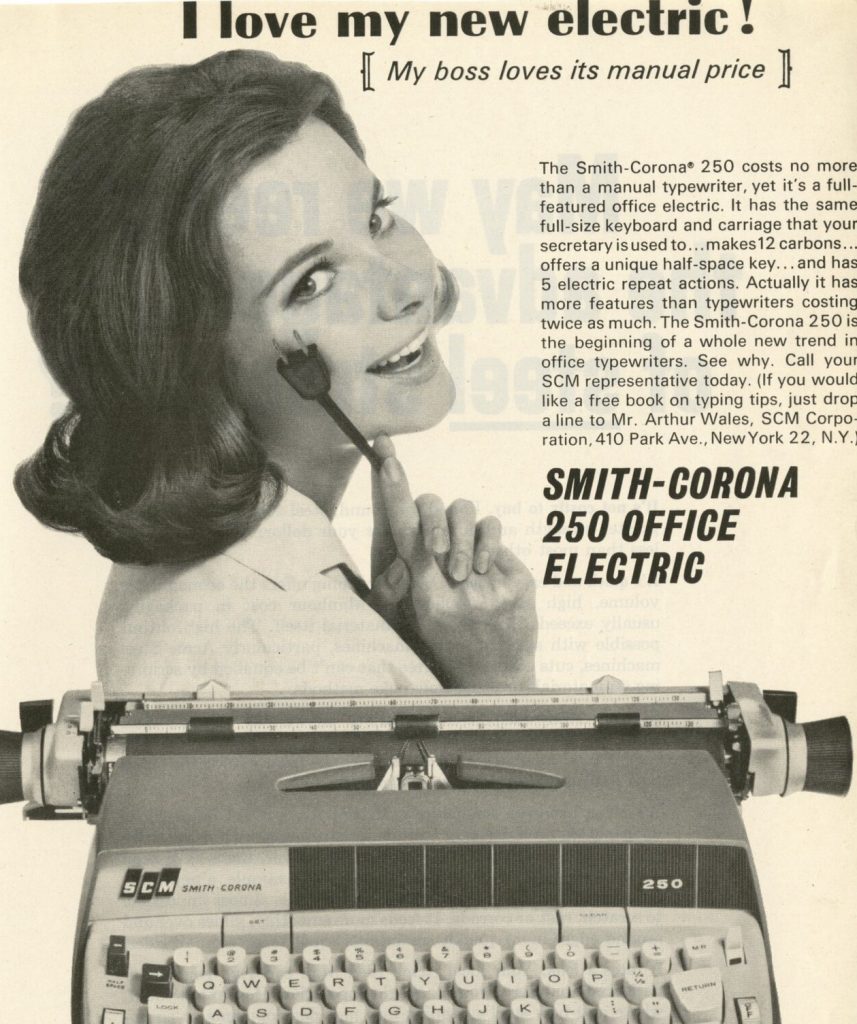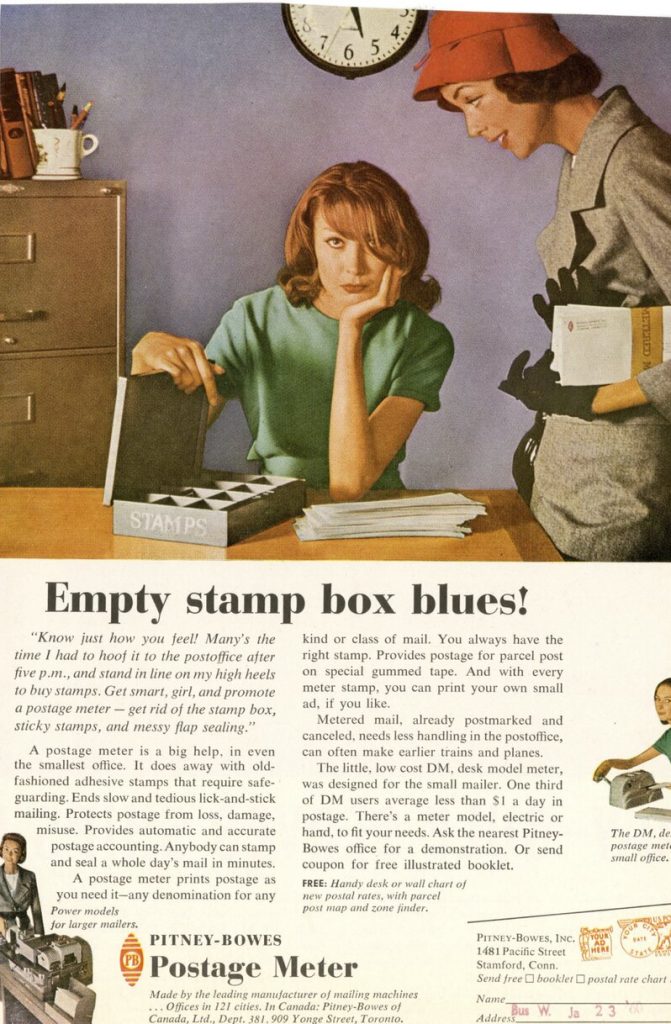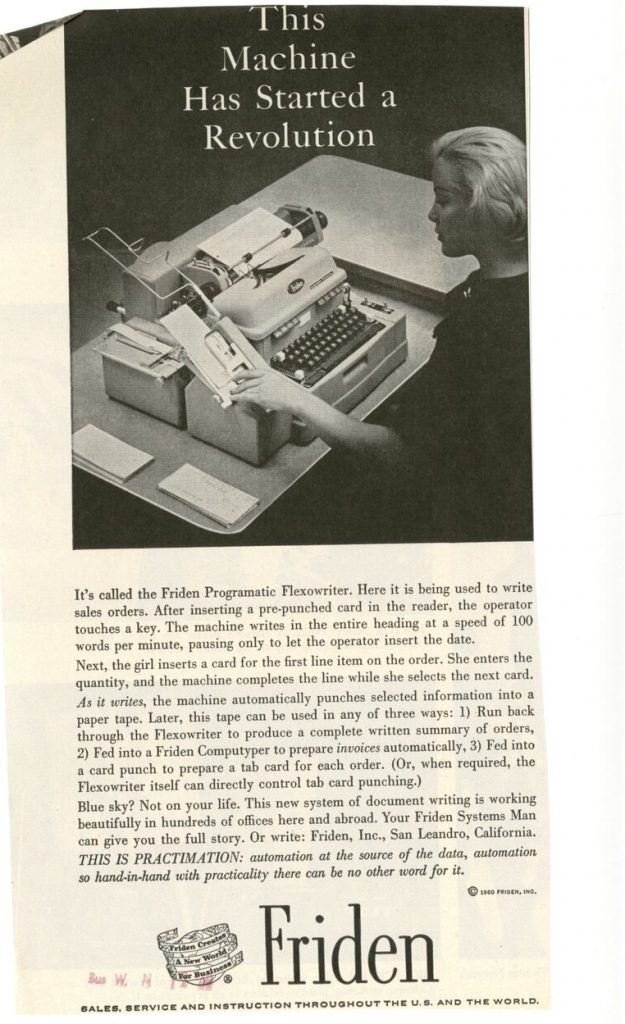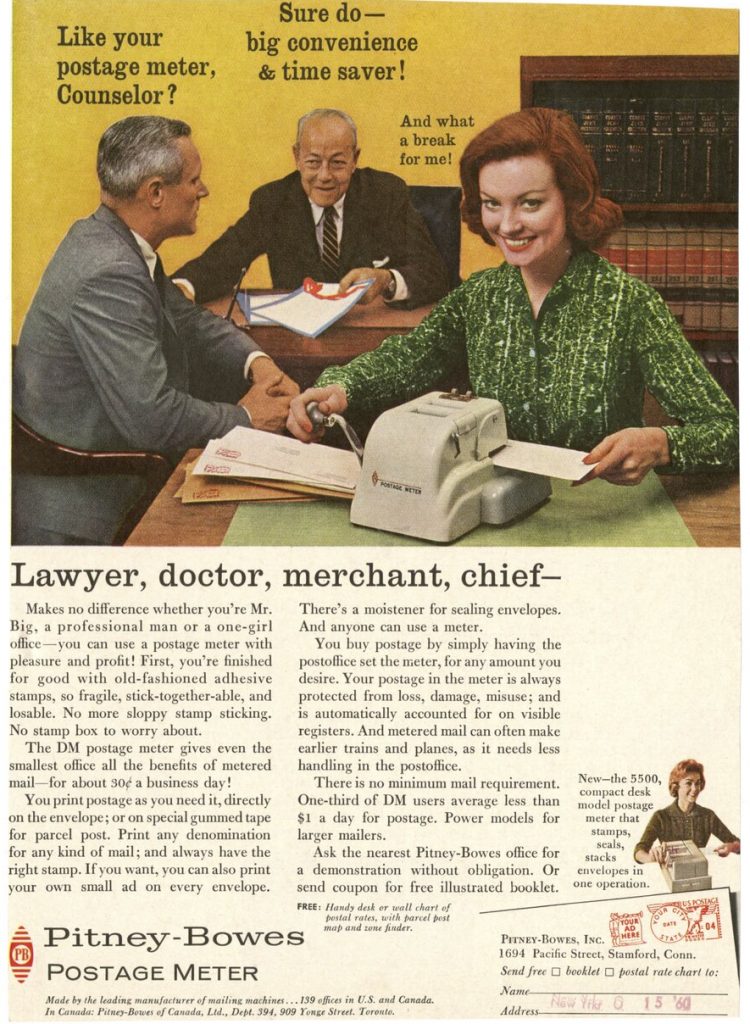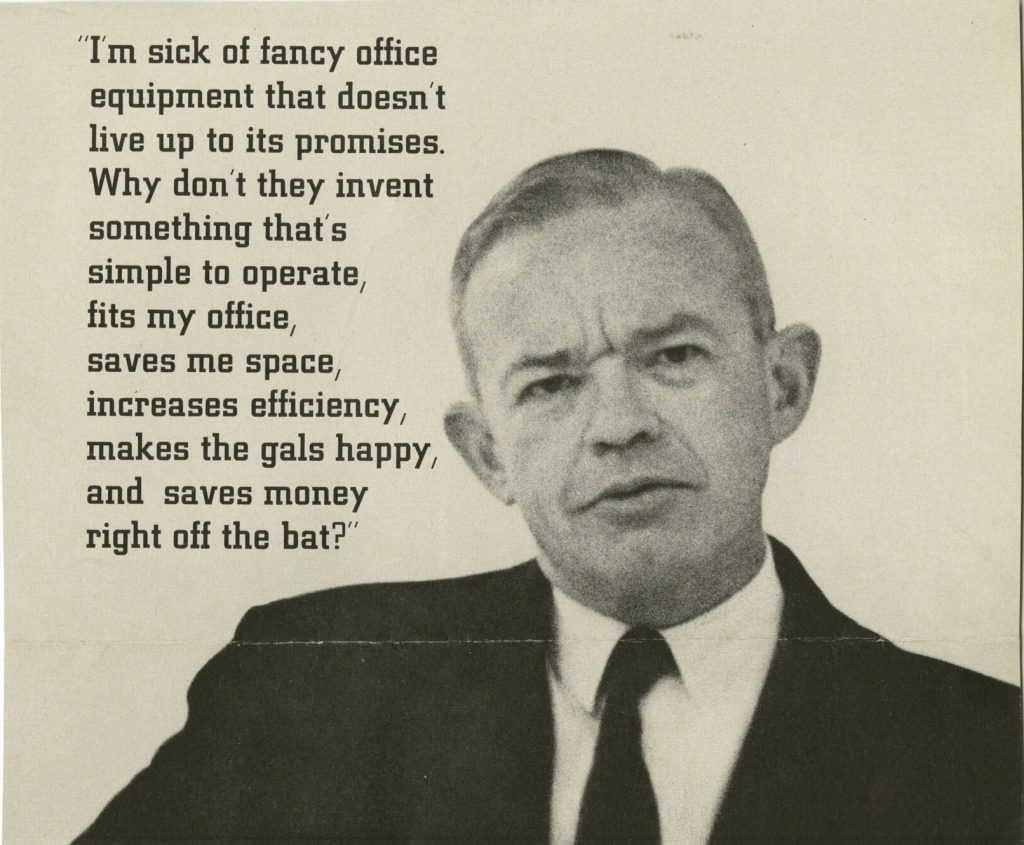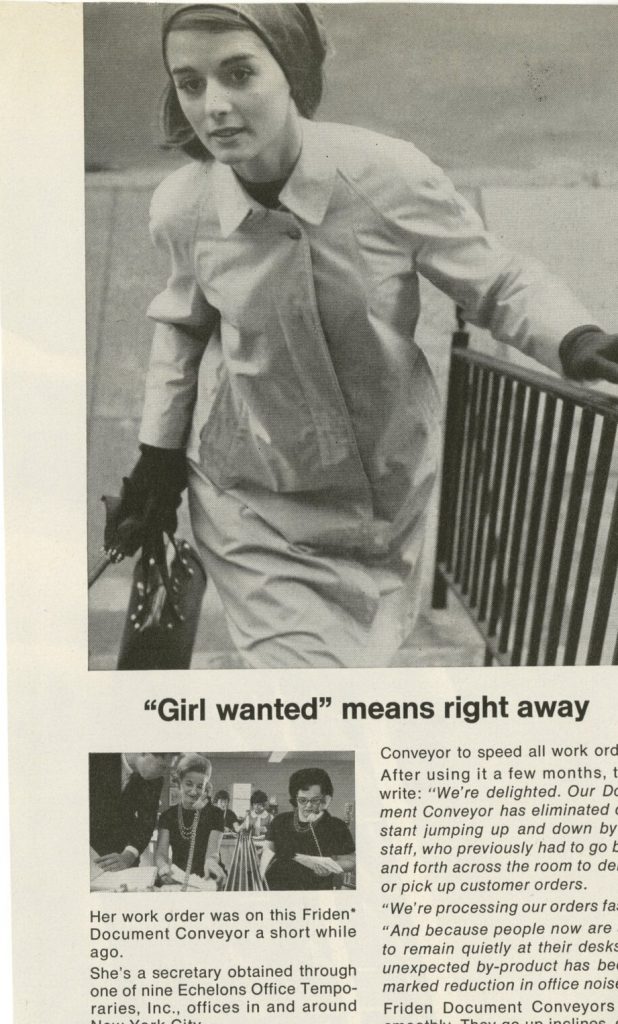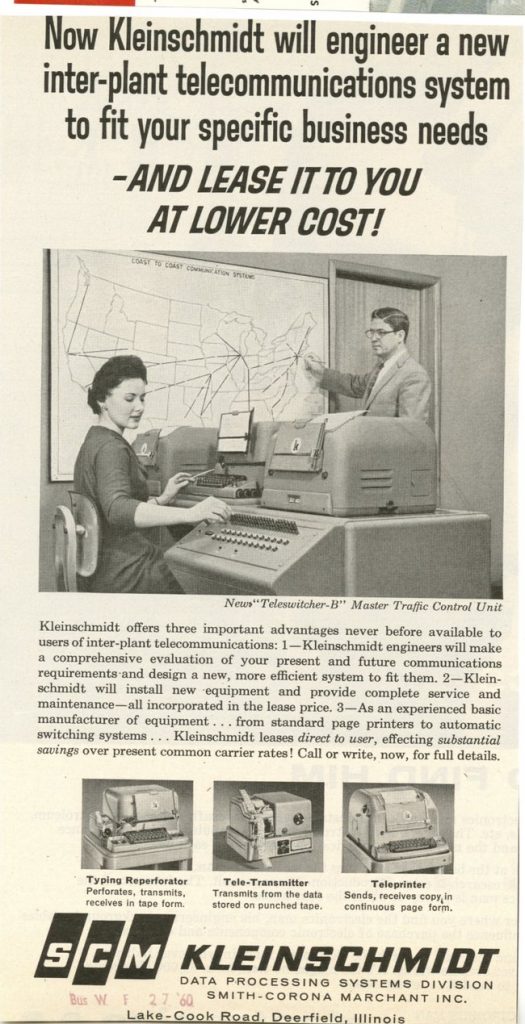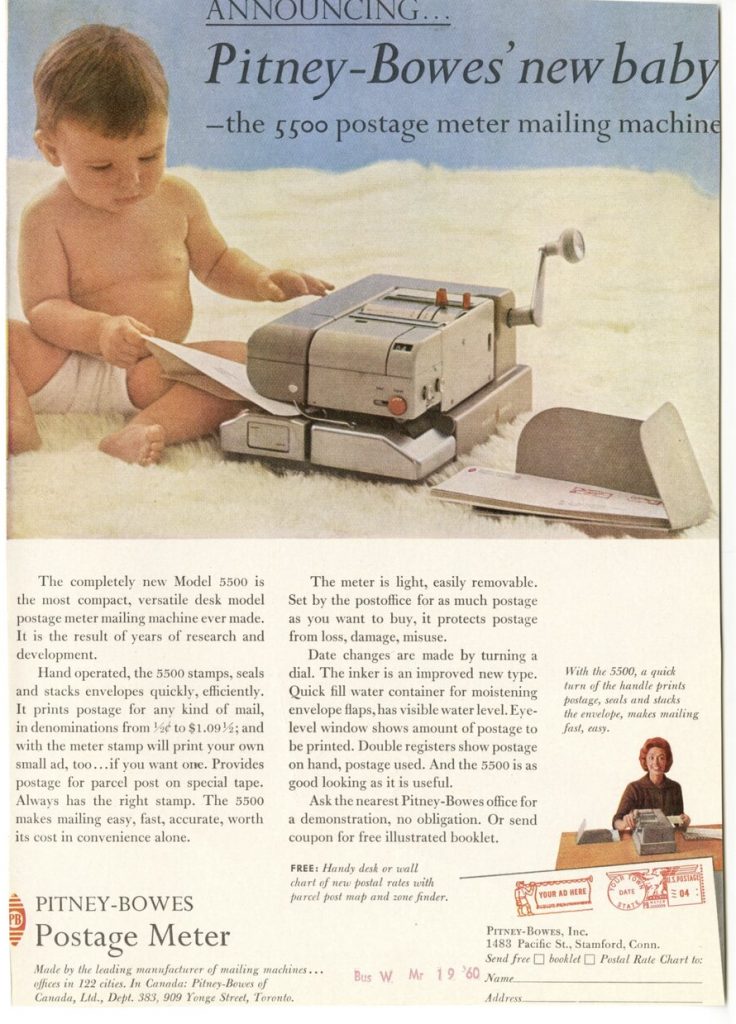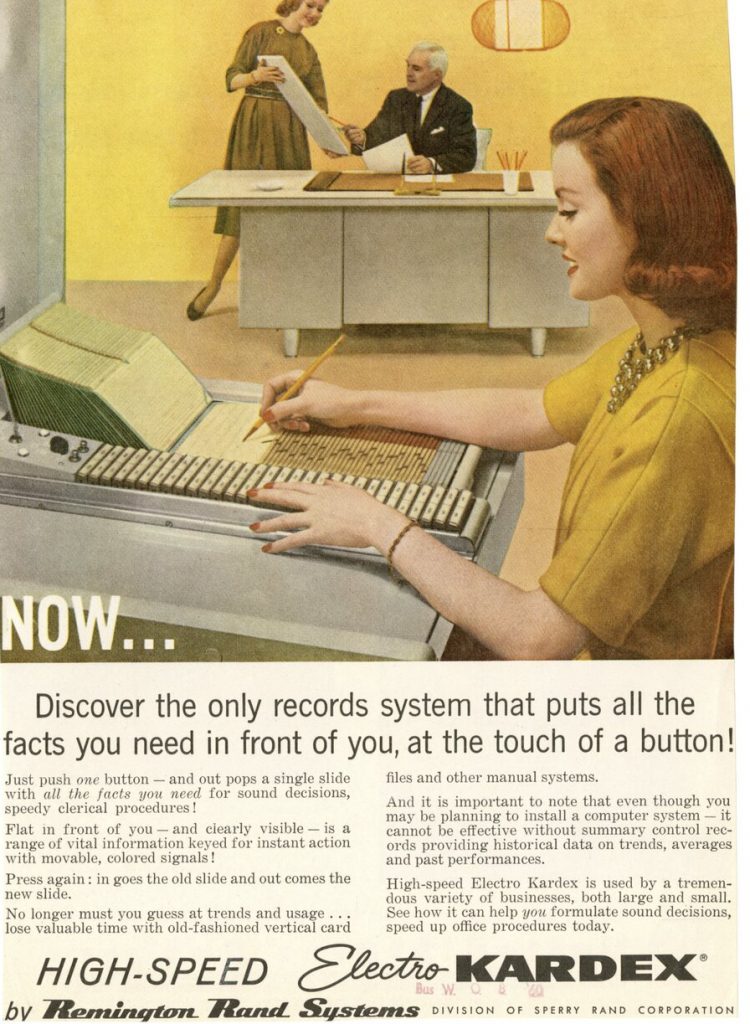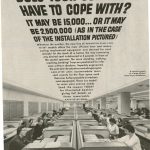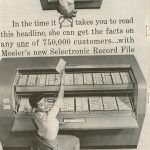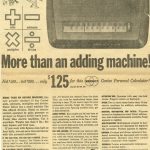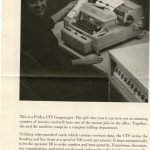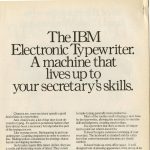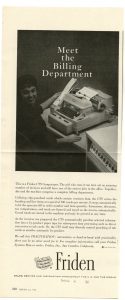
JWT Competitive Advertisements Collection, 1960-4 c.1, “Office Equipment”
Introduction
This part of the exhibit includes advertisements featuring women using office technology, personal computers, and other technologies made by companies like IBM, Smith-Corona, and Remington from 1960 to the late 1970’s. Most of the advertisements are sourced from the J. Walter Thompson Competitive Ads archive in the John W. Hartman Center for Sales, Advertising, and Marketing History. These advertisements demonstrate sexism towards secretaries in office spaces and in the technology industry, while also testifying to women’s long history of using various technologies.
Topics in this exhibit include:
- Ads for office equipment, data processing equipment, and personal computers
- Ads that compare women’s labor to new technology
- Juxtaposition of simple women using complex technology, and simple technology being better than complex women
Background
In the 1950’s and 1960’s, the influx of women into office spaces as secretaries and clerical workers meant advertisers often directed ads for office equipment towards women. But during the 1970’s, with the advent of new data processing technologies and early office computers, advertisers were un sure who to advertise towards. That is, they could not predict who the target audience and users of computers would be in the future.
Was computer programming a job for highly skilled scientists, or for clerical workers like secretaries and typists?
Unsure of the answer, advertisers targeted many early commercial data technologies towards both men and women.
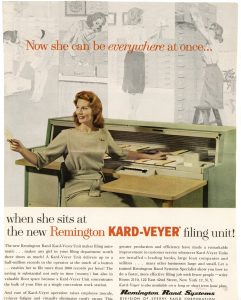
JWT Competitive Advertisements Collection, 1960-4 c.1, “Office Equipment”
This dual-targeting reflected a reality in which women had been using office and data technologies as secretaries and clerical workers, but men were making purchasing decisions for office equipment and rapidly entering the information industry. Even though advertisements for typewriters or early data processing machines infantilized women, they also reflected a reality in which women knew how to use these technologies.
In fact, female participation in the computer sciences was steadily increasing in the late 1970’s as new computer technologies were being developed.
But by the mid 1980’s, when personal computers were advertised almost exclusively to men, women’s participation sharply declined.
Women’s participation in the computer sciences industry peaked in 1984 and then it began steadily decreasing when personal computers were introduced to male-market.
Explore these galleries to see how gender and technology were constructed in technological advertisements from 1960 to 1978.
Galleries
Office Equipment
Gallery 1 includes advertisements for office technologies like typewriters, dictation devices, and postage meters, from 1960 to 1964. Women in these advertisements are presented as being hyper excited for new office equipment, often posed in sexualized positions and formal clothing. These technologies are presented as complementary to secretarial work, rather than a replacement of it. Ease of use and simplicity of office technologies are emphasized, with one ad showing a new-born baby and a women doing the same job.
Gallery 1
- JWT Competitive Advertisements Collection, 1964-5 c.1, Office Equipment, "Typewriters"
- JWT Competitive Advertisements Collection, 1960-4 c.1, "Office Equipment"
- JWT Competitive Advertisements Collection, 1964-5 c.1, Office Equipment, "Office Supplies and Equipment 1 of 3"
- JWT Competitive Advertisements Collection, 1964-5 c.1, Office Equipment, "Office Supplies and Equipment 1 of 3"
- JWT Competitive Advertisements Collection, 1960-4 c.1, "Office Equipment"
- JWT Competitive Advertisements Collection, 1960-4 c.1, "Office Equipment"
- JWT Competitive Advertisements Collection, 1964-5 c.1, Office Equipment, "Office Supplies and Equipment 2 of 3"
- JWT Competitive Advertisements Collection, 1964-5 c.1, Office Equipment, "Office Supplies and Equipment 1 of 3"
- JWT Competitive Advertisements Collection, 1960-4 c.1, "Office Equipment"
- JWT Competitive Advertisements Collection, 1960-4 c.1, "Office Equipment"
- JWT Competitive Advertisements Collection, 1960-4 c.1, "Office Equipment"
- JWT Competitive Advertisements Collection, 1960-4 c.1, "Office Equipment"
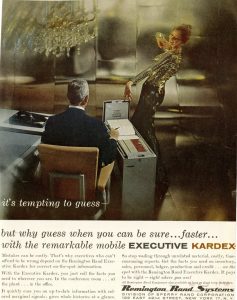
Data Processing Equipment
Gallery 2 features advertisements that show women using data processing equipment, like file storage and retrieval systems, records systems, and accounting systems, largely from the 1970’s. This period of time seems to be a transition moment for office technology. In some ads, the complexity of new technologies is emphasized as are the skills of secretaries using them. In other ads, technologies are sold as “better” or more efficient versions than secretaries. Either way – it is the technology that is given the credit, not the women, even as these ads also depict some of the grueling and isolating conditions of data processing work.
Gallery 2
- JWT Competitive Advertisements Collection, 1960-4 c.1, "Office Equipment"
- JWT Competitive Advertisements Collection, 1960-4 c.1, "Office Equipment"
- JWT Competitive Advertisements Collection, 1960-4 c.1, "Office Equipment"
- JWT Competitive Advertisements Collection, 1960-4 c.1, "Office Equipment"
- JWT Competitive Advertisements Collection, 1960-4 c.1, "Office Equipment"
JWT Competitive Advertisements Collection, 1960-4 c.1, "Office Equipment"
- JWT Competitive Advertisements Collection, 1978-6 c.1, Folder 5, "Personal Computers"
- JWT Competitive Advertisements Collection, 1960-4 c.1, "Office Equipment"
- JWT Competitive Advertisements Collection, 1978-6 c.1, "IBM"
Computer Ads
Gallery 3 features early advertisements for computers from 1978. During the late 1970’s, computers became cheaper and more available in commercial contexts. Computers were far more complex than previous technologies, however, so to sell these seemingly esoteric technologies, things like accessibility, usability, and even democracy are emphasized. More men seem to appear in these ads, or no people are featured at all, although women are also shown using computers in the service of office and clerical work.
Gallery 3
- JWT Competitive Advertisements Collection, 1978-6 c.1, Folder 1, "Personal Computers"
- JWT Competitive Advertisements Collection, 1978-6 c.1, Folder 1, "Personal Computers"
- JWT Competitive Advertisements Collection, 1978-6 c.1, Folder 5, "Personal Computers"
- JWT Competitive Advertisements Collection, 1978-6 c.1, Folder 1, "Personal Computers"
- JWT Competitive Advertisements Collection, 1978-6 c.1, Folder 1, "Personal Computers"
- JWT Competitive Advertisements Collection, 1978-6 c.1, Folder 1, "Personal Computers"
